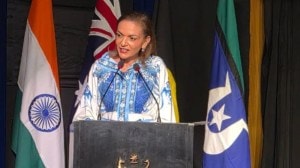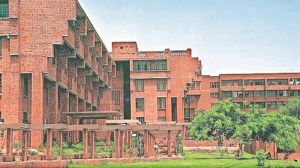L&T net profit crashes, interest burden zooms
MUMBAI, MAY 20: Larsen & Toubro, the country's largest diversified conglomerate, has come out with a poor performance with the net pro...

MUMBAI, MAY 20: Larsen & Toubro, the country’s largest diversified conglomerate, has come out with a poor performance with the net profit crashing to Rs 341.63 crore in the fiscal 1999-2000 from Rs 470.74 crore in the previous year.
Income from operations showed a marginal rise from Rs 7291.49 crore for the year 1988-1999 to Rs 7423.81 crore, an increase of 2 per cent. The main cause for dip in net profit is the rising interest expenses which stood at Rs 332.35 crore for the fiscal 99-00, which is double the figure for the previous year which stood at Rs 160.66 crore.
The L&T scrip, at Friday’s close of Rs 209 on the Bombay Stock Exchange, has lost around 70 per cent from the high of Rs 629.95 it made on January 4 this year. The market cap of L&T has fallen by over Rs 11,000 crore — from Rs 15,665 crore to Rs 4,424 crore.
The increase in interest cost is the result of Tadpatri unit commencing commercial operations and the commissioning of captive power plants. The 50-mw naphtha-based captive power plant was commissioned in the fourth quarter of 1999-2000, analysts said.
This is the second successive year when L&T has suffered a fall in profits.In fiscal 1999, L&T had posted about 12 per cent drop in its net profit–from Rs 531.44 crore in 1997-98 to Rs 470.74 crore. The company’s interest and brokerage burden during the year went up from Rs 74.34 crore to Rs 160.66 crore.
L&T managing director A M Naik said that in spite of the unfavourable business environment, the company booked orders worth Rs 8,146 crore as compared to Rs 7,688 crore in the previous year, an increase of nearly 6 per cent. The order backlog at the year end at Rs 6819 crore was substantially higher than Rs 5870 crore at March 31, 1999, registering an increase of 16 per cent.
According to Naik, the implementation of the re-structuring plan announced by the company in January 2000 is on course. The operations of the company have been restructured into 6 operating divisions. “Business management committees have been formed for each of the operating divisions to closely monitor the performance of each division on the basis of the new performance measurement system,” the company said.
According to Naik, the price of cement in all markets in which the company sells its cement, however, continued to be depressed. Consequently, sales realisation in almost all markets was lower. In spite of this price situation, the operating margins of cement business improved substantially from 11 per cent to 15 per cent during the year. Naik attributed this to a significant reduction in variable and fixed cost per tonne.



- 01
- 02
- 03
- 04
- 05




























